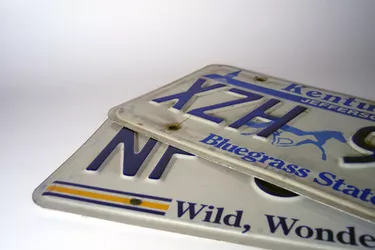
Every state requires drivers to register their cars, trucks and SUVs before driving them on public roads. While laws vary by state, many of the procedures are the same. You can also change your registration if you change your name, transfer the car from a parent to a child or move.
Requirements
Video of the Day
Your state's department of motor vehicles will supply a list, either in a brochure or on its website, of the information you need to present when you apply for a change of registration. Besides valid identification, one of the most important things you'll need is a copy of the title to prove that you own the vehicle. If you don't have the title because you are still financing the car you'll need to supply a copy of the bill of sale or a letter from the financing company that holds the title naming you as the owner. Other requirements include a check for the registration change fee and an insurance card to prove that you have a policy that meets your state's minimum standards.
Video of the Day
Process
Once you have the required documentation and information, you can apply for a change to your registration. Your state's department of motor vehicles will offer a form called a change of application form, or a similar name. This is the form you'll need to fill out and submit along with copies of your documentation. Once the department has your request it will take several weeks to print and mail out your new registration. If your former registration is no longer valid, the department will issue you a temporary registration that serves as proof of vehicle registration. Driving without a valid registration is a violation that can lead to fines.
Where to Go
Most states allow drivers to change their registration information by visiting a department of motor vehicles office. If you change your address or other basic information only, you may also be able to make the change when you renew your registration online or through the mail.
When you buy a new vehicle, the dealer will apply for your registration for you. If there is not time to apply for a registration the dealer can issue a temporary registration and include an estimated charge for the registration cost on the bill of sale. This means that you may owe an additional fee or receive a refund from the dealer once the department of motor vehicles processes the application and issues a permanent registration.
Moving Between States
If you move from one state to another, you'll need to change your registration to reflect your new state of residence. Most states limit the amount of time you can wait to change your vehicle registration once you take up a permanent residence. Besides providing proof of ownership and other documents related to changing a registration, you may need to submit to a vehicle inspection. This inspection determines that your car's vehicle identification numbers, or VINs, match your records. You may need to also submit to a safety inspection or smog test to make sure that your car complies with the new state's auto registration guidelines.